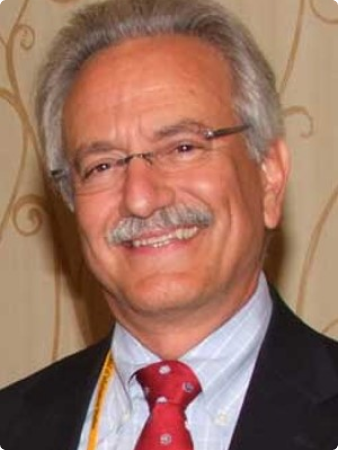KEYNOTES

Mr. Dung Hoang
Day 1
The Journey of Vietnam Library’s Digital Transformation
-
 Abstract:
Abstract:
Only start adopting library management software with partial international standards like Marc-21 in late 1990s, Vietnam libraries has been able to catch up with the technology development and trends of the worldwide library community. Software such as Library Services Platform, Institutional Repositories system, Discovery tool, RFID system, or automatic scanners for mass book digitization services are now common terms and widely applied at many libraries. Different sharing system between libraries have been implemented such as a consortium between libraries or national-wide platform to share institutional repositories and e-database. Vietnam already started implementing “Smart library” that adopts Internet of Things (IoT), Artificial Intelligent (AI), Big Data technologies to personalize the services to its patrons. This note is trying to summarize the continuing development of libraries in this digital age and explain how digital transformation has changed the role of libraries in every aspects in Vietnam.
-
 Bio:
Bio:Mr. Dung Hoang graduated with Computer Science degree at the University of York, England, Mr. Dung Hoang worked as a technology consultant, project director, head of department at different technology companies before founding DLCorp in 2009 which focused on providing library solutions and IT system integration services. He consulted and directed many library projects in Vietnam and in South East Asia regions. He was a speaker at various library workshops and conferences, mostly on the topic of library technologies and application. He also foresees the development of the company’s products, such as L’IMA – an One-Stop-Shop Smart Library Solution. Under his leadership, DLCorp is a partner of well-known library solutions and services providers such as Innovative Interfaces, EBSCO, JISC; an only “Registered Services Provider” of Dspace in South East Asia; and a trusted partner of librarians, libraries and faculties of library and information science in Vietnam.

Dr. Atsuyuki Morishima
Day 2
The CyborgCrowd Project and Beyond: Earth-Scale Human-ML-Logic Teams for Answering Open World Questions
-
 Abstract:
Abstract:
Crowdsourcing and AI are two most important driving forces for redesigning any existing information systems in not only the digital library domain but also any other applications that require labor-intensive contributions. This talk highlights the interaction of them through the results of JST CREST CyborgCrowd Project (2016-2022), a Japanese government funded research project for a better collaboration of human workers and AI in the crowdsourcing setting. In the project, we (1) developed technologies to implement the Human+AI Crowd model, in which human crowd workers and blackbox AI workers work together to complete a large number of data-centric tasks, (2) devised optimization techniques that exploit human cognitive characteristics, and (3) identified some of the characteristics of good AI workers. The results were partly implemented on our all-academic crowdsourcing platform Crowd4U, which has been used for a variety of real-world projects involving many universities and organizations, including several library and digital archive projects. This talk addresses the results of the CyborgCrowd project and introduces new research directions towards the new world in which humans, machine learning and logic interact with each other for answering open-world questions where the information at hand is not complete to answer them.
-
 Bio:
Bio:Dr. Atsuyuki Morishima is a professor of Faculty of Library, Information and Media Science and Center for Artificial Intelligence Research, University of Tsukuba, Japan. His research interests include human-in-the-loop data systems, data integration and digital libraries. He has been involved in many real-world crowdsourcing projects on digital libraries, digital archives, natural disaster responses and smart cities. He served as the leader of JST CREST CyborgCrowd Project and currently, leads the Crowd4U initiative and the "computational division of labor" project. His papers have been listed in the best papers and runner-ups in the ACM SIGMOD (2001), IPSJ Journal (2004), CAiSE (2015), Emerald Journals (2018), DBSJ Journal (2012, 2021), and ACM WebSci (2022). He has been contributing to organizations and programs of conferences and journals in the database, crowdsouricnng, digital libraries and information science communities, such as VLDB, HCOMP, ICADL, JCDL and iSchools.

Dr. Gary Marchionini
Keynote 3
Dynamic Libraries for and of People
-
 Abstract:
Abstract:
Digital library research and development has evolved over more than half a century. Machine Readable Cataloging (MARC) in the 1960s led to retrospective conversions of catalogs linked to electronic tags in physical books; tools and techniques to digitize physical collections emerged to make ever larger portions of the world’s physical documents electronically available; digital production tools grew ubiquitous and now generate most of the world’s content so that libraries manage ‘born digital’ content; global networks make digital collections broadly accessible; and DLs have led policies on open access and shared services. Thus, over many decades, the digital library community has helped transform libraries and information access on technical and policy dimensions. The current state of digital library R&D is strongly influenced by two trends: the electronic forms and characteristics of knowledge, and attention to human information needs and behaviors. A.) Knowledge is dynamic and knowledge is multimodal. Digital libraries collect, manage, and preserve text, data, multimedia, executable code, digital streams, transaction and interaction traces, human cyberidentities, and artificial agents. B.) Libraries have become highly human-centric and prospective, giving attention to human information needs and the rich range of human cultures and societies that generate knowledge. Libraries serve people and much digital library research focuses on identifying and satisfying those needs through effective user interfaces rooted in studies of human behaviors and preferences. The attention economy and pervasive digital recordings of human activity has also given rise to records (digital traces) of human activity and status in both the physical and virtual worlds. These increasingly rich traces represent our cyberidentities. Increasingly, digital libraries will collect, manage, and preserve our virtual identities and thus be responsible for collections of ‘people’. The broad scope of knowledge that digital libraries steward and the increasing attention to human needs and traces of human activity gives rise to many new technical, policy, and social challenges. Traditional challenges such as efficient storage and delivery, persistence, provenance, access, and authority take on new dimensions and are augmented by issues of social justice, human dignity and privacy, and social control. Digital library research and development has been fruitful and impactful and new challenges and opportunities for advancing the human condition stand ready for the next half century of research and development.
-
 Bio:
Bio:Dr. Gary Marchionini is the Dean and Cary C. Boshamer Professor at the UNC School of Information and Library Science (SILS). He is a member of the iSchools Board of Directors. He is a recognized expert in human-information interaction, interface design and testing, and digital libraries; he has published over 200 articles, chapters and reports in a variety of books and journals. His current interests and projects are related to: impact of information on individuals, society, and human knowledge; interfaces that support information seeking and information retrieval; usability of personal health records; multimedia browsing strategies; digital libraries; information architecture; personal identity in cyberspace; and evaluation of interactive media, especially for learning and teaching.
